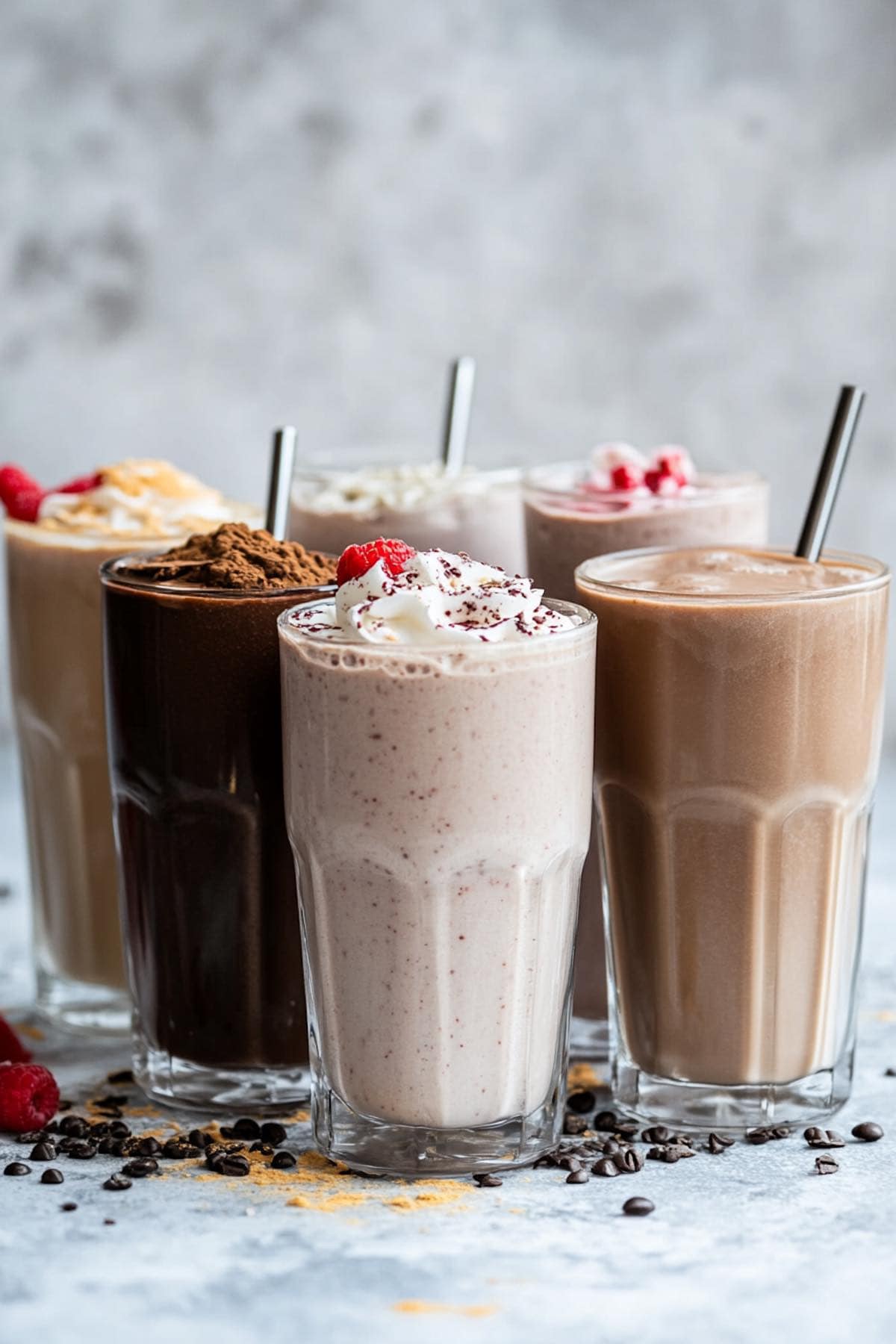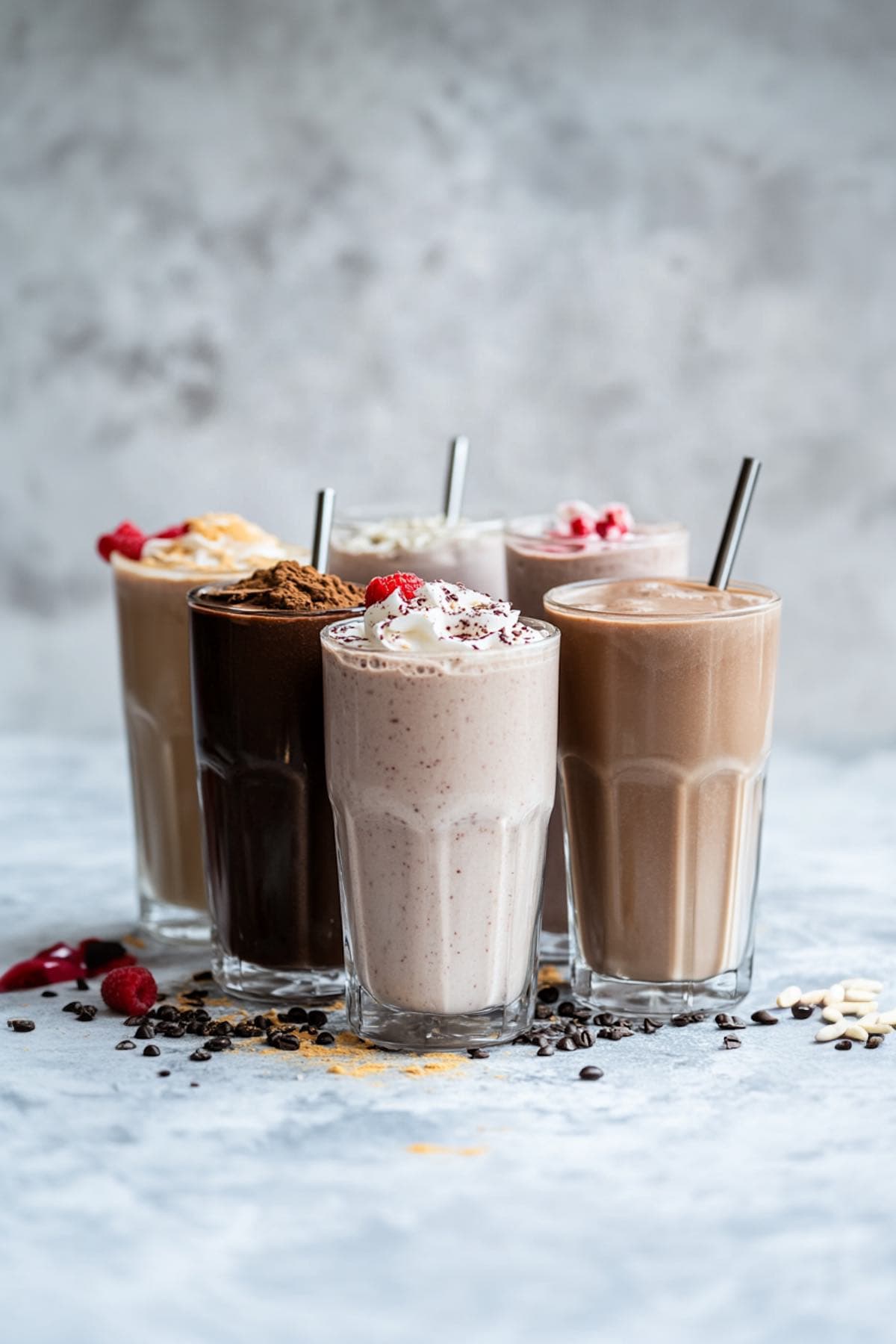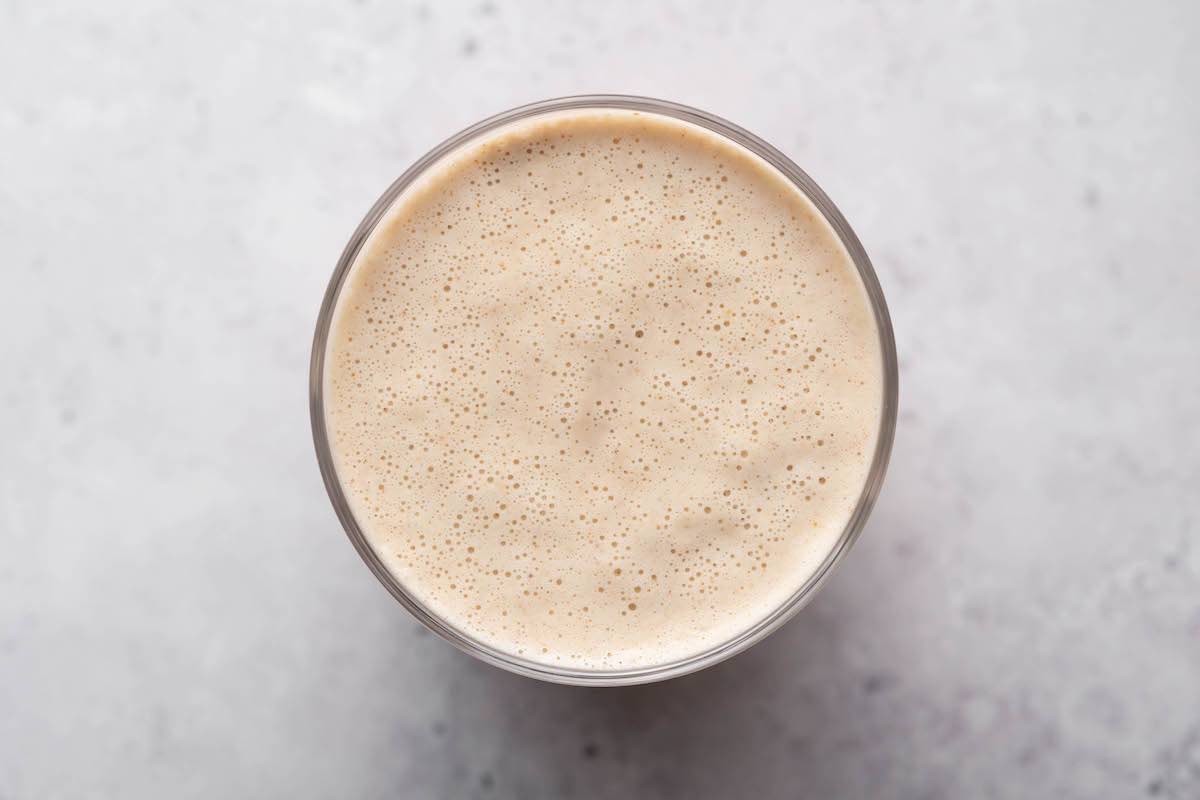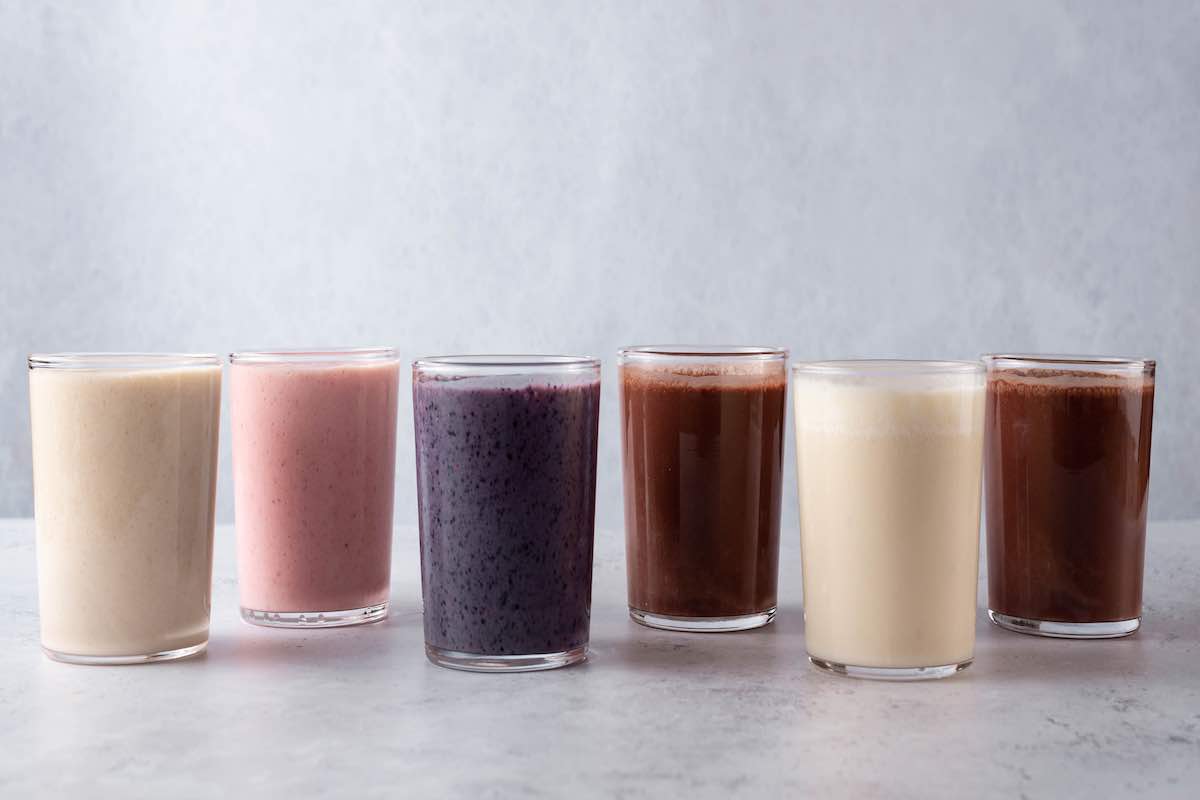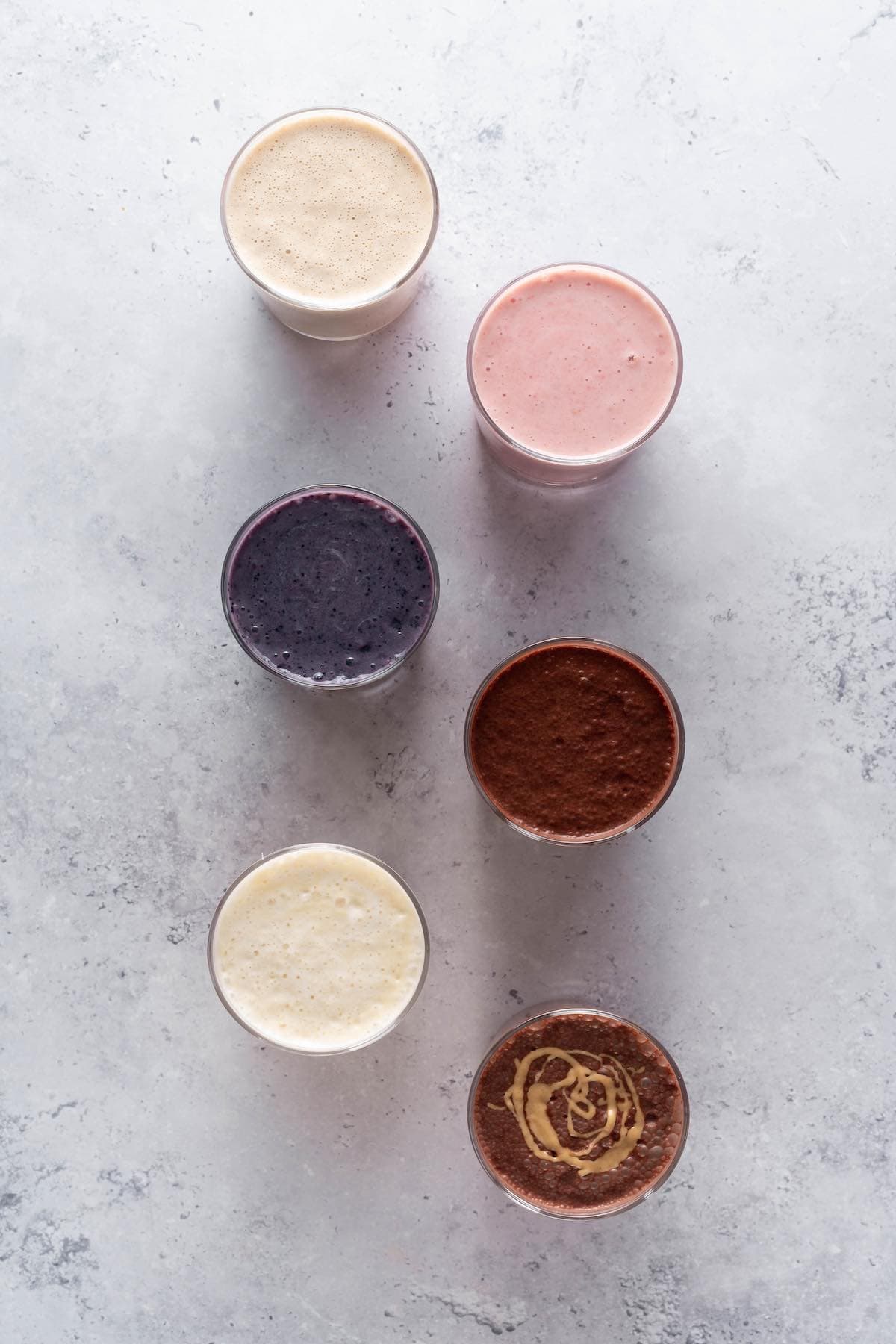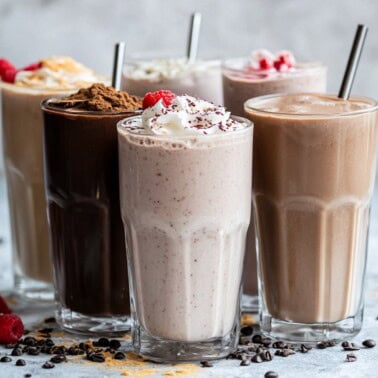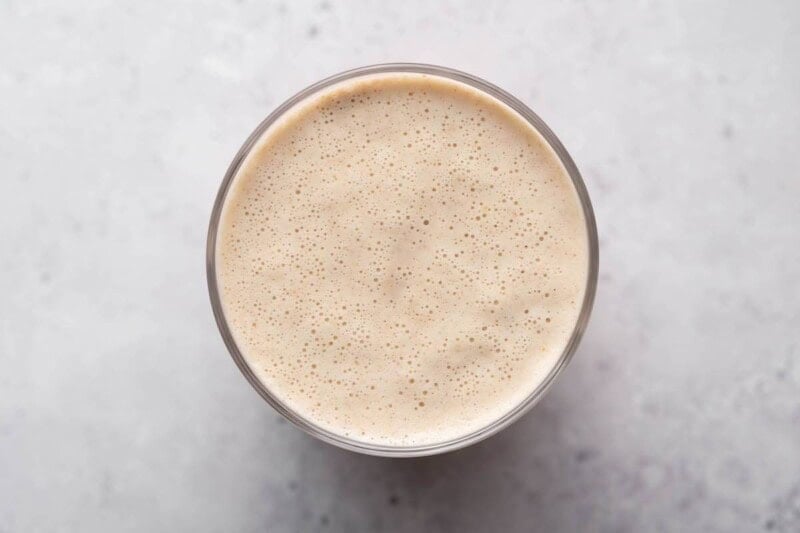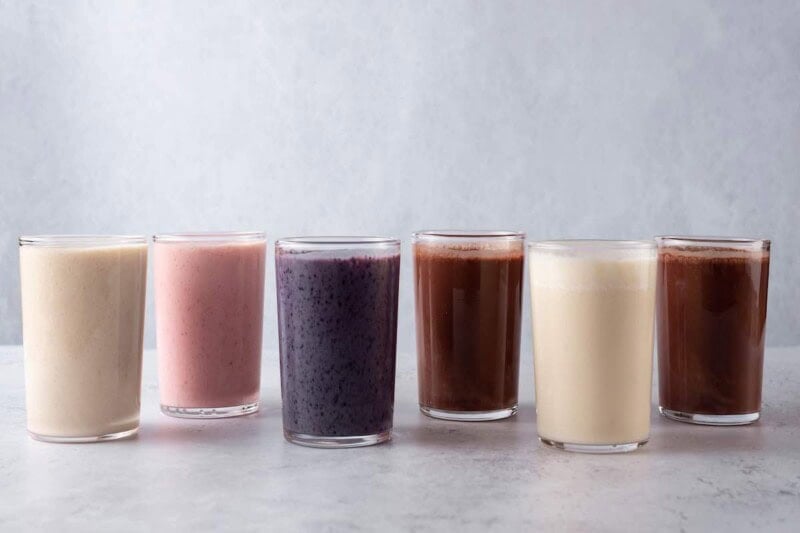Want more protein shake recipes? Try my chocolate protein shake, peanut butter protein shake, coffee protein shake, and cinnamon roll protein shake next. Protein is in its heyday right now, meaning it’s more important than ever to learn how to make a protein shake…that’s actually good. Yes, you will have to break out the blender, but I promise it’s SO worth it. My homemade protein shakes are quick and make it easy to add an extra dose of protein, vitamins, and minerals, all while tasting like an actual dessert.
Why I love this recipe
Customizable. I’ve included the base recipe, six flavors, and tips for creating dozens more! It ACTUALLY tastes good. I’ve had more protein shakes than I can count, and too many are chalky, bland, or just plain ick. So, I created a protein shake recipe that basically tastes like a healthy milkshake. An easy 20+ grams of protein. If you’re on the move, strength training, or on a weight loss journey, extra protein is so important. That’s why I have a shake almost every day. Protein powder-free options! Not everyone loves protein powder, so I included a list of ingredients you can add instead but still get plenty of protein.
Ingredients needed
This is my base protein shake recipe, which works well when adapted to other flavors or combinations.
Protein powder. The key ingredient. I prefer using vanilla protein powder as the base, but use any flavor you enjoy the taste of. Milk. I used unsweetened almond milk as it’s the lowest in calories, but any milk works, like coconut milk, soy milk, or dairy milk. Ice. Thickens the shake without adding excess calories.
How to make a protein shake
I’ve included step-by-step photos below to make this recipe easy to follow at home. For the full printable recipe instructions and ingredient quantities, scroll to the recipe card at the bottom of this post. Not all protein powders are created equal. Each blend contains different levels of protein, sugar, and even fat. The three main types I enjoy are whey, casein, and pea protein powder.
Whey protein powder. It’s popular, easy to find, and has the optimal protein-to-calorie ratio. The downside is not everyone can process the lactose in whey. Casein protein powder. Much thicker and creamier than other types of protein, making it great for baking or making creamy shakes. Read the label, as many brands blend it with extra sugar and calories. Pea protein powder. A great vegan and dairy free option with high protein and a mild earthy flavor. Again, read the labels, as most brands sneak in extra flavorings and sweeteners.
Flavor variations
Use my base recipe, then add any of the following ingredients to change the flavor.
Chocolate. Use chocolate protein powder and add 2 tablespoons of unsweetened cocoa powder. Vanilla. Add ¼ cup frozen cauliflower and 1 teaspoon of vanilla extract. Banana. Add 1 small banana, 1 teaspoon of cinnamon, and a drizzle of honey. Chocolate peanut butter. Use chocolate protein powder and add 2 tablespoons of cocoa powder and 1 tablespoon of peanut butter (or low calorie peanut butter). Blueberry. Add ¼ cup of frozen blueberries and ¼ cup of Greek yogurt. Strawberry. Add ¼ cup of frozen strawberries and ¼ cup of Greek yogurt. Cookies and cream. Use cookies and cream protein powder. Mixed berry. Add 1/4 cup of frozen mixed berries and 1/4 cup of Greek yogurt. Almond butter. Add 2 tablespoons of almond butter. White chocolate. Add 1-2 tablespoons of white chocolate chips. Triple chocolate. Add 1 tablespoon of cocoa powder and 1 teaspoon each of dark chocolate chips and milk chocolate chips. Chocolate strawberry. Add 1/4 cup of frozen strawberries and 1 1/2 tablespoons of cocoa powder.
Storage instructions
To store: Protein shakes are best enjoyed fresh, but needed, they can be stored in a sealed container in the fridge for up to one day. Give it a good stir before serving.
Dairy. Low-fat cottage cheese, plain Greek yogurt, and skim milk all add protein and a creamier texture. Nuts and seeds. Nut butter (like almond butter or cashew butter) adds protein and healthy fats. Superfoods. Chia seeds, hemp seeds, and flax seeds are good sources of protein, fiber, and healthy omega-3 fatty acids. Tofu. Yes, believe it or not, you can totally add tofu to smoothies! I suggest silken tofu as it’s very soft and blends smoothly. Vegetables. While not super protein dense, greens like Swiss chard, kale, and spinach add a few extra grams of protein per serving.
Frequently asked questions
More high-protein drinks
Protein milkshake Protein coffee Protein hot chocolate
Originally published December 2021, updated and republished September 2024
